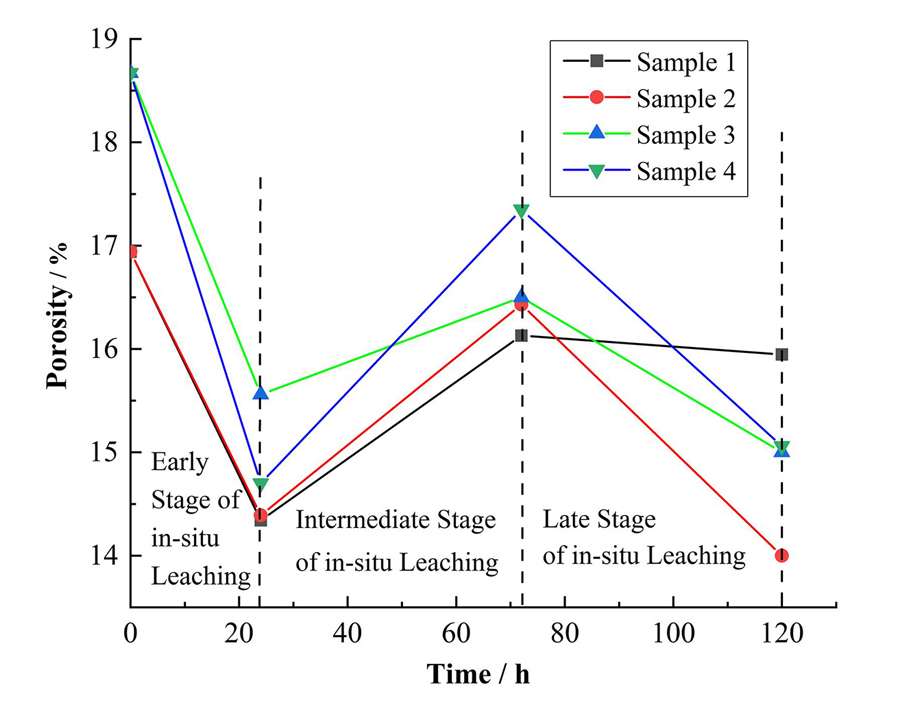In the process of in-situ leaching of uranium, pore blockage greatly limits the leaching efficiency of uranium, and the pore blockage is mainly due to the complex physical and chemical action of minerals and leaching agents in in-situ leaching of uranium.
This study aims at the influence mechanism of each mineral composition on pore blockage under the action of leaching agent in the process of in-situ leaching of uranium to realize the efficient exploitation of uranium resources.
First of all, sandstones of uranium mine in Xinjiang were taken as the experimental samples, the relationship between the mineral composition and porosity in the process of acid in-situ leaching of uranium was studied through acid in-situ leaching experiment, and nuclear magnetic resonance experiment was employed every other period of time to obtain the porosity change curve in the process of uranium sandstone leaching. Then, the mineral characteristics of uranium sandstone were analyzed by X-ray diffractometer to find the changes of the mineral composition during uranium sandstone leaching. Finally, the influence of different minerals on porosity change was analyzed with the help of gray relational theory.
The results show that the pore blockage in the leaching process is mainly due to the complex physical and chemical action of many kinds of minerals, which will affect the solute transport process of other minerals in uranium sandstone and not only lead to the change of mineral composition but also affect the leaching of uranium. Through grey correlation analysis, it is found that calcium sulfate and magnesium silicate as plugging materials have a correlation degree of over 0.781 for porosity and uranium leaching rate. The physical adsorption of clay minerals can block the micropores of uranium sandstone, so its correlation with porosity and uranium leaching is 0.831 and 0.842 respectively, indicating that pore plugging has an impact on uranium leaching.
According to the relationship between the change of mineral composition and pore blockage in the process of leaching, making appropriate adjustment can solve the problem of pore blockage, so as to realize the efficient exploitation of uranium resources.




